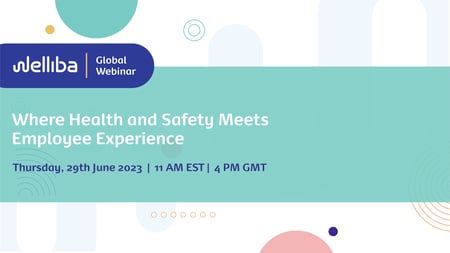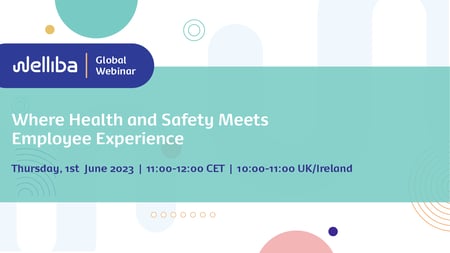How AI is Helping to Unlock the Power of Passive Data
Conferences, webinars and articles are abuzz with headlines about AI applications in HR and I/O psychology. Setting aside discussions of AI’s impact on jobs, roles and the workforce, it’s important to recognise that HR’s use of what we now talk about as AI, isn’t new.
While HR leaders don’t need to understand how AI works in detail, they do need to understand how to evaluate the quality and validity of the outputs, in order to know the questions to ask and what to look for. Indeed, this is the same level of evaluation needed when working with any tool.
Indeed, elements of what we now label as AI have been present in HR practice for decades. Consider the early days of online personality questionnaires when these tools first began generating narrative reports based on candidate responses; they were already incorporating components of artificial intelligence. Online ability tests needed to be fake proof so we developed ways to generate a test at runtime. Similarly, video interviewing is scored by expert-taught AI, all of these examples are based on the paradigm of putting the expert in a box. And this paradigm is still valid.
Back then, the term AI was not used – but it could have been. These HR tools were built around knowledge representation; learning by taking expert knowledge and applying it over and over again. Such tools became invaluable to HR, saving time and resources while obtaining information and insight.
While HR leaders don’t need to understand how AI works in detail, they do need to understand how to evaluate the quality and validity of the outputs, in order to know the questions to ask and what to look for. Indeed, this is the same level of evaluation needed when working with any tool.
While the underlying algorithms of AI have changed only a little, although now based mainly on neural networks, two areas have seen immense change. It is these which have sparked great interest in the application of AI to talent data. First is the availability of data, the sheer amount of it and the reduction in the cost of storing it. Second is the accelerated speed of computers to carry out analysis.
Understanding the Drivers of Employee Experience, Performance and Engagement
At Welliba, our passion lies in working with a client to identify the key factors that drive engagement, productivity and performance in that specific organisation.
While performance requires skills, when considered alone they tell an incomplete story. The context in which those skills are played out – and the mindset to deliver those skills – play an increasingly significant role.
The messy combination of mindset, context and skills – and its far reaching impact – remains a critical blind spot in our understanding.
The starting point for us was to research and develop a game-changing model of the drivers of employee experience. An outstanding employee experience isn’t simply a nice to have – it fuels great people and business outcomes. We are talking about high retention rates, solid trust levels, turbo-charged productivity and enhanced professional development. With such a model in place, the challenge shifts to become one of measurement.
HR leaders are no strangers to the thorny challenges of measurement: they’ve been navigating this for years.
Competency and personality models are measured typically through surveys, tests and questionnaires. But such tools require action from the individual – and that, in turn, causes an increasing element of friction. There is survey fatigue. People have neither the time nor the inclination to answer yet another question or complete a further survey.
And yet, for the HR leader and the business, pinpointing the action needed to elevate employee experience and engagement is critical.
We needed to find a way to measure what matters – accurately, instantly and without friction.
Realising the Possibilities
If not surveys, how else can we access data about how people work?
It’s crucial that HR develops their own expertise in evaluating the quality of the analysis outputs. The HR lead should see themselves as the conductor of an orchestra. Partners and services are the skilled musicians, but they are in charge and they direct. They need to understand the nuances of each output and how it might fit within the bigger picture.
Within Welliba, we talk of three axes of data: active/passive; structured/unstructured and self/others.
HR teams focus on active data: gained from responses to prompts and questions. However, with the need for frictionless data collection, passive data – the latent data that we might have from traces we leave online or gathered as a by-product from using various tools – opens up new possibilities to learn about people. It revolutionises our understanding of how people work.
The hunt is to unearth these sources of passive data, and transform them into what we call ‘evidences’. Be warned: this might be a long list. These evidences are translated into characteristics/scores on the model. From this, conclusions are then drawn and insights unlocked.
A human expert can certainly review and analyse each evidence against the model – and do this time and time again. But passing it to generative AI, and these insights come quickly, with little friction and still with psychometric precision.
The core principles and bedrock of psychometric measurement – validity and reliability – remain the same. We still check that the data used is relevant and dependable, just as we would when validating any personality or ability psychometric instrument. We compare the AI-generated insight with that of a human expert: the more they align, the better. We also compare the results that come from another data source, be it internal or external, or active data gathered at another time.
Most HR leaders are unlikely to have access to these skills, capabilities and technologies in-house. As such, they might choose to partner with a provider who can directly work with whatever type of data they have – and add to it. They not only get an external, independent team working on it, but also pass on the privacy checks and responsibilities needed.
HR leaders take note: choosing to work with an external partner, doesn’t mean relinquishing your responsibilities.
It’s crucial that HR develops their own expertise in evaluating the quality of the analysis outputs. The HR lead should see themselves as the conductor of an orchestra. Partners and services are the skilled musicians, but they are in charge and they direct. They need to understand the nuances of each output and how it might fit within the bigger picture.
How Does the Use of Passive Data Fit Within the History of AI?
Alan Turing, the pioneer of computers, proposed a test of a machine's ability to exhibit intelligent behaviour equivalent to, or indistinguishable from, that of a human, i.e. artificial intelligence. He stated that if a person talks to a machine, and the person cannot tell if it’s a person or machine they are talking to, it passes the Turing Test. It remains the gold standard test today.
Turing’s groundbreaking paper in 1950 introduced the concept of the Turing Test, yet is has taken years to get to where we are today. Why so long? And are we finally at the threshold where a system passes this test?
We believe we are very close to it.
The Future Is Just in Time
We see a future where data from diverse sources is accessed, measured and analysed against a single validated model (e.g., Employee Experience, Psychosocial Risk), and just-in-time information is delivered to answer specific questions.
A user will simply type in a question, and within minutes, have an answer.
This is not a far-off dream. We see this as becoming an integral part of daily working practice in the not-too-distant future.










